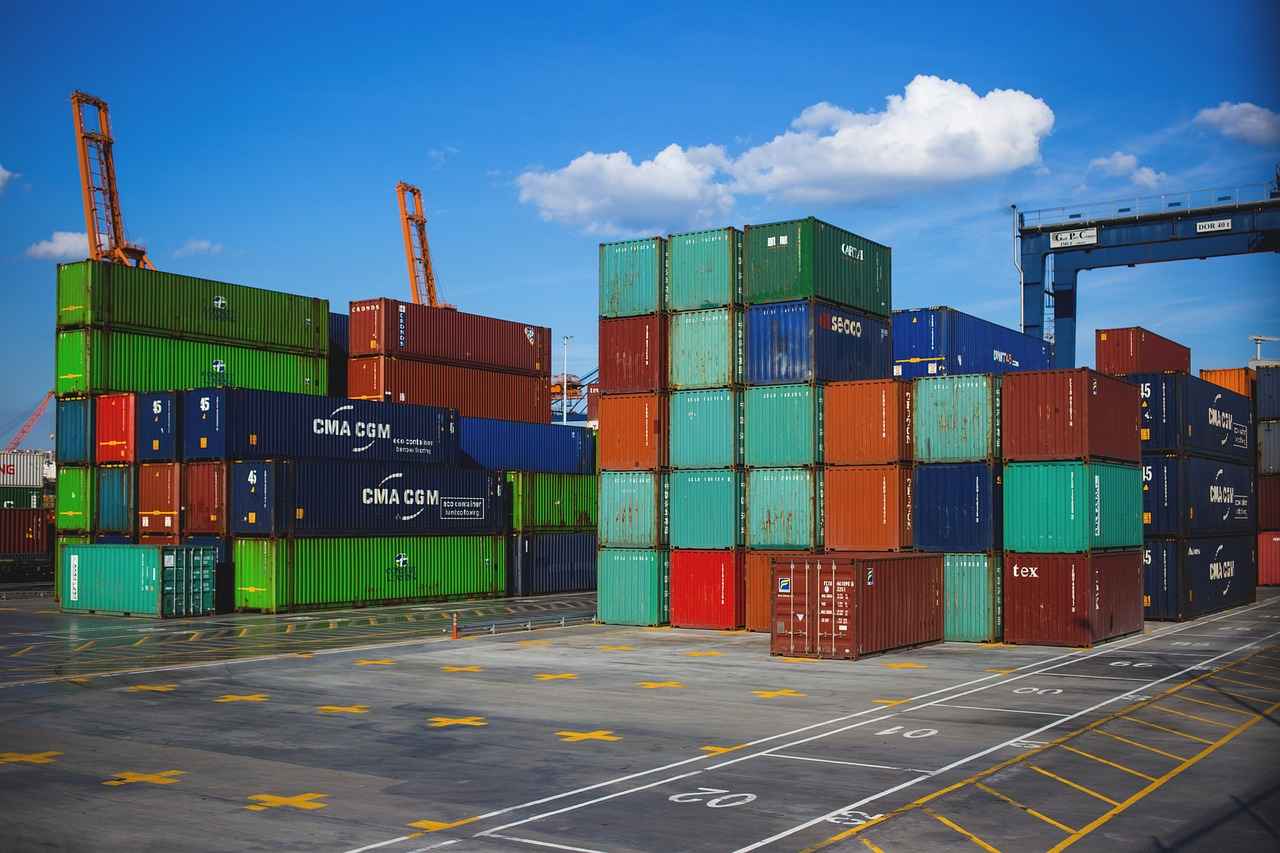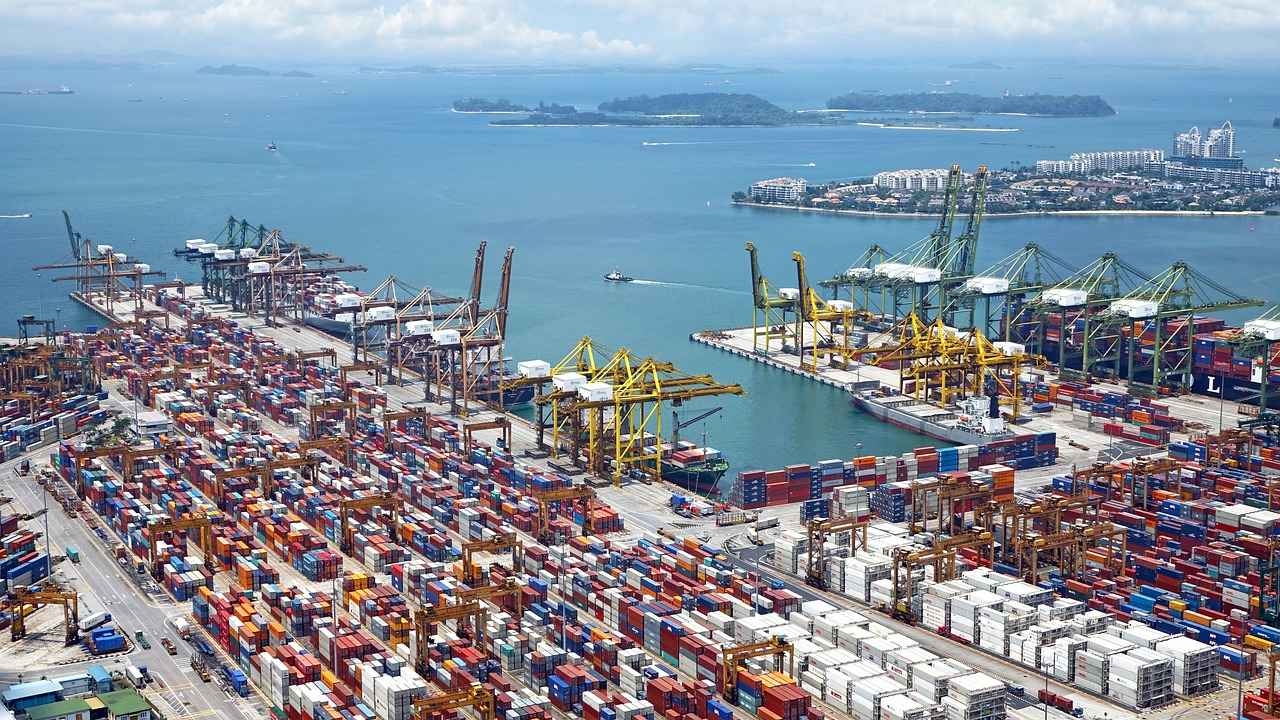This article provides insights into effectively managing shipping operations on online marketplaces, offering practical tips and strategies to enhance efficiency and customer satisfaction.
Understanding Marketplace Shipping Requirements
Every online marketplace has its own set of shipping requirements and guidelines. Understanding these regulations is crucial for compliance and can significantly optimize your shipping processes. Sellers should familiarize themselves with the specific policies regarding shipping times, packaging standards, and tracking requirements to improve customer experiences.
Choosing the Right Shipping Carrier
Selecting an appropriate shipping carrier is critical for successful operations. When making this choice, consider factors such as cost, delivery speed, and reliability. These elements directly impact customer satisfaction and your bottom line.
- Evaluating Carrier Options: Compare various shipping carriers based on their rates, delivery times, and service quality. This will help you find the best fit for your business needs.
- Cost-Effectiveness of Carriers: Analyze shipping rates across different carriers to identify the most cost-effective options. This can lead to significant savings.
- Delivery Speed and Reliability: Fast and reliable delivery enhances customer satisfaction. Research carrier performance metrics to ensure timely shipments.
Integrating Shipping Software
Utilizing advanced shipping software can streamline your operations. These tools automate critical tasks such as label printing, tracking, and inventory management, ultimately saving time and reducing human error.
Packaging Best Practices
Effective packaging is essential for protecting products during transit. Implementing best practices can minimize damage and returns while optimizing shipping costs.
- Choosing the Right Packaging Materials: Select appropriate materials based on product fragility and shipping distance. This ensures that items arrive safely.
- Optimizing Package Size: Using the right package size can reduce shipping costs. Smaller packages incur lower shipping rates, so measure products carefully to avoid excess dimensional weight charges.
Setting Shipping Rates
Determining shipping rates can be complex. Understanding your costs and the competitive landscape is crucial for setting prices that attract customers while maintaining profitability.
- Calculating Shipping Costs: To set competitive shipping rates, calculate all associated costs, including materials, labor, and carrier fees. This ensures that your pricing strategy is sustainable.
- Offering Free Shipping Options: Many customers prefer free shipping. Consider incorporating it into your pricing strategy by adjusting product prices or setting minimum order thresholds to qualify for free shipping.
Implementing Efficient Order Fulfillment Processes
Streamlining order fulfillment processes can enhance efficiency. Implementing best practices helps ensure that orders are processed quickly and accurately.
- Utilizing Fulfillment Centers: Fulfillment centers can handle storage, packing, and shipping, allowing sellers to focus on other business aspects. This can significantly improve operational efficiency.
- Establishing Clear Workflow Procedures: Clear procedures for order processing can reduce errors and improve speed. Documenting workflows ensures that all team members understand their roles in the fulfillment process.
Monitoring Shipping Performance Metrics
Regularly monitoring shipping performance metrics is essential for identifying areas for improvement. Key metrics include delivery times, shipping costs, and customer satisfaction rates.
- Analyzing Customer Feedback: Customer feedback can provide valuable insights into shipping performance. Analyze reviews and comments to identify patterns and areas needing attention.
- Adjusting Strategies Based on Data: Utilize data analytics to refine shipping strategies. Adjust shipping methods and carriers based on performance data to enhance service quality and reduce costs.
Incorporating these strategies into your shipping operations can lead to improved efficiency, reduced costs, and enhanced customer satisfaction. By focusing on the critical aspects of shipping management, sellers can create a competitive advantage in the bustling online marketplace.

Understanding Marketplace Shipping Requirements
When it comes to selling on online marketplaces, understanding shipping requirements is crucial for success. Each marketplace has its own set of rules and guidelines that sellers must follow to ensure compliance and enhance customer satisfaction. By familiarizing themselves with these requirements, sellers can streamline their shipping processes and provide a better overall experience for their customers.
First and foremost, it is essential to recognize that shipping requirements can vary significantly from one marketplace to another. For example, some platforms may mandate specific packaging standards, while others might have restrictions on certain shipping carriers. Sellers must take the time to review the shipping policies outlined by each marketplace to avoid potential pitfalls.
- Shipping Timeframes: Most marketplaces specify expected delivery times. Sellers should ensure that they can meet these deadlines to maintain their seller ratings and customer trust.
- Shipping Costs: Understanding how shipping costs are calculated, including any fees imposed by the marketplace, is vital for setting competitive prices.
- Labeling Requirements: Some marketplaces require specific labeling for packages. Adhering to these guidelines can prevent delays and ensure smooth order processing.
Moreover, being aware of the international shipping regulations is also critical for sellers who wish to expand their reach beyond domestic markets. Different countries have varying laws regarding customs, duties, and prohibited items. Sellers should familiarize themselves with these regulations to avoid shipping delays or fines.
In addition to compliance, understanding shipping requirements can help sellers optimize their shipping processes. By analyzing the specific needs of their chosen marketplace, sellers can implement strategies that enhance efficiency. For example, they may choose to utilize a particular shipping carrier that aligns better with the marketplace’s requirements, potentially leading to faster delivery times and reduced costs.
Furthermore, sellers can benefit from integrating shipping software that can automatically calculate shipping rates, print labels, and track packages. This not only saves time but also minimizes the risk of errors that can arise from manual processes.
Ultimately, understanding marketplace shipping requirements is not just about compliance; it’s about creating a seamless experience for customers. When sellers are well-informed and proactive in their shipping strategies, they can foster greater customer loyalty and drive repeat business. By investing time in understanding these requirements, sellers position themselves for long-term success in the competitive landscape of online marketplaces.

Choosing the Right Shipping Carrier
Choosing the right shipping carrier is a critical decision for any business involved in e-commerce. The effectiveness of your shipping strategy can significantly impact your bottom line and customer satisfaction. When selecting a carrier, it is essential to evaluate multiple factors to ensure that you are making the best choice for your specific needs.
First and foremost, consider the cost of shipping. Different carriers offer varying rates based on factors such as package weight, dimensions, and destination. It is advisable to compare shipping rates across multiple carriers to identify the most cost-effective options. This can lead to substantial savings, especially for businesses that ship large volumes of products.
Next, delivery speed is another vital factor. Customers today expect their orders to arrive quickly, so partnering with a carrier that can meet these expectations is essential. Research the average delivery times of potential carriers and consider their service levels. Look for carriers that offer expedited shipping options, as well as reliable tracking services that keep customers informed about their order status.
Reliability is equally important when choosing a shipping carrier. You want to ensure that your products arrive on time and in good condition. Investigate the performance metrics of potential carriers, such as their on-time delivery rates and customer service reviews. A carrier with a proven track record of reliability will help maintain your business’s reputation and foster customer loyalty.
Additionally, consider the geographical coverage of the carriers you are evaluating. Some carriers may excel in specific regions but lack coverage in others. If your business ships internationally, ensure that your chosen carrier has the necessary logistics and expertise to handle cross-border shipping efficiently.
Another aspect to consider is the technology and tools that carriers provide. Many carriers offer integrated shipping solutions that can streamline your operations. This includes features like automated label printing, real-time tracking, and inventory management systems. Utilizing these tools can save time and reduce errors, enhancing your overall shipping efficiency.
It’s also worth exploring any additional services that carriers may offer. For example, some carriers provide packaging solutions, insurance options, or specialized handling for fragile items. These services can add value to your shipping operations and enhance the overall customer experience.
Finally, don’t overlook the importance of customer support. A carrier that provides excellent customer service can make a significant difference when issues arise. Ensure that the carrier you choose offers responsive support, whether through phone, email, or live chat, to address any concerns promptly.
In summary, selecting the right shipping carrier involves a careful analysis of various factors, including cost, delivery speed, reliability, geographical coverage, technology, additional services, and customer support. By taking the time to evaluate these elements, you can make an informed decision that enhances your shipping operations and ultimately leads to improved customer satisfaction.
Evaluating Carrier Options
When managing shipping operations for your business, one of the most critical steps is . This process goes beyond simply choosing a shipping service; it involves a thorough assessment of multiple factors that can significantly affect your operational efficiency and customer satisfaction.
To begin with, it is essential to compare shipping rates across different carriers. Shipping costs can vary widely, and finding a carrier that offers competitive pricing is vital for maintaining your profit margins. Many carriers provide online calculators that allow you to estimate shipping costs based on package dimensions, weight, and destination. Taking the time to gather this data will help you make informed decisions.
Another crucial factor to consider is delivery times. Customers increasingly expect fast shipping, and the carrier you choose should align with your delivery promises. Research the average delivery times for each carrier and consider their performance during peak seasons, as delays can lead to customer dissatisfaction. Fast and reliable delivery not only enhances customer trust but also encourages repeat business.
Additionally, evaluate the service quality of each carrier. This includes looking at their customer service responsiveness, ease of tracking shipments, and handling of lost or damaged packages. A carrier with a solid reputation for excellent service can save you from potential headaches down the line. Reading customer reviews and testimonials can provide valuable insights into the experiences of other businesses.
When comparing multiple options, it’s also wise to consider any additional services that carriers may offer. For instance, some carriers provide package insurance, tracking capabilities, and even logistics support. These services can add value to your shipping operations and help you manage your supply chain more effectively.
To facilitate your evaluation, consider creating a comparison table that outlines the key attributes of each carrier. This table can include columns for shipping rates, delivery times, service quality ratings, and any additional services offered. By visualizing the data, you can make a more straightforward comparison and choose the best fit for your business needs.
| Carrier | Shipping Rates | Average Delivery Time | Service Quality Rating | Additional Services |
|---|---|---|---|---|
| Carrier A | $10 | 2-3 days | 4.5/5 | Insurance, Tracking |
| Carrier B | $12 | 3-5 days | 4.0/5 | Logistics Support |
| Carrier C | $9 | 1-2 days | 4.8/5 | Insurance, Tracking |
Ultimately, the goal of evaluating carrier options is to find a balance between cost, speed, and reliability that meets your business needs. By conducting a thorough analysis and comparing multiple carriers, you can make a decision that not only enhances your shipping operations but also boosts customer satisfaction. Remember, the right carrier can be a significant asset in your overall business strategy.
Cost-Effectiveness of Carriers
When it comes to shipping, cost is undeniably a critical factor influencing decisions for businesses operating in online marketplaces. The choice of shipping carrier can significantly affect overall expenses, and thus, it is essential to conduct a thorough analysis of shipping rates offered by various carriers. By doing so, businesses can uncover opportunities for substantial savings that can enhance their profitability.
One effective approach to managing shipping costs is to compare rates from multiple carriers. Each carrier has its own pricing structure, which can vary based on factors such as package dimensions, weight, destination, and delivery speed. By obtaining quotes from several carriers, businesses can identify the most cost-effective options tailored to their specific shipping needs.
In addition to comparing base rates, it’s important to consider any additional fees that may apply. Many carriers impose surcharges for fuel, handling, or even for specific delivery windows. Understanding these potential costs will provide a more comprehensive view of the total shipping expenses and help in making informed decisions.
Moreover, businesses should also evaluate the service quality of the carriers they are considering. While a lower shipping rate might be appealing, it is equally important to ensure that the carrier can meet delivery timelines and maintain reliability. Delays in shipping can lead to customer dissatisfaction, which can ultimately harm the business’s reputation.
- Delivery Speed: Fast shipping can enhance customer satisfaction. Researching carrier performance metrics will help in choosing a carrier known for timely deliveries.
- Reliability: A reliable carrier minimizes the risk of lost or damaged packages, which can incur additional costs and impact customer trust.
Another strategy for cost-effectiveness involves leveraging shipping software. These tools can automate various aspects of the shipping process, including label printing and tracking, which can save time and reduce human error. Furthermore, many shipping software solutions offer features that allow businesses to compare rates from different carriers in real-time, enabling quick decision-making.
It’s also beneficial to explore volume discounts or contractual agreements with carriers. Many shipping companies offer reduced rates for businesses that ship a high volume of packages. Establishing a long-term partnership can lead to better pricing and additional benefits, such as priority service or dedicated support.
In summary, the cost-effectiveness of carriers plays a vital role in the shipping decisions of online marketplace sellers. By conducting thorough analyses, comparing rates, understanding additional fees, and leveraging technology, businesses can optimize their shipping strategies. This not only leads to reduced costs but also enhances overall operational efficiency, ultimately contributing to improved customer satisfaction.
Delivery Speed and Reliability
are critical components in the e-commerce landscape, significantly influencing customer satisfaction and retention. In today’s fast-paced world, consumers expect their orders to arrive promptly and without complications. Therefore, optimizing delivery processes is not just beneficial; it is essential for maintaining a competitive edge.
To enhance delivery speed, it is crucial to choose the right shipping carriers. Different carriers offer various services, with some specializing in expedited shipping while others focus on cost-effectiveness. Evaluating carriers based on their performance metrics—such as average delivery times, reliability ratings, and customer feedback—can help businesses make informed decisions. This analysis should also include examining the carriers’ track records for timely shipments and their ability to handle peak seasons effectively.
In addition to selecting the right carrier, businesses should also consider integrating advanced shipping software. These tools can automate many aspects of the shipping process, from label printing to tracking updates, which can significantly reduce human error and save time. By employing shipping software, companies can provide real-time tracking information to customers, enhancing transparency and trust.
Another important factor is the packaging used for shipments. Effective packaging not only protects products during transit but also contributes to delivery efficiency. By utilizing the right materials and optimizing package sizes, businesses can reduce shipping costs and minimize delays caused by damaged goods. For instance, using lightweight materials can help lower shipping fees, while ensuring that items are securely packed can prevent returns and customer dissatisfaction.
Moreover, implementing a robust order fulfillment process is essential to achieving reliable delivery. This includes establishing clear workflows and utilizing fulfillment centers, which can streamline operations and allow businesses to focus on core activities. Fulfillment centers are equipped to handle storage, packing, and shipping, ensuring that orders are processed quickly and accurately.
Monitoring shipping performance metrics is also vital. Regularly analyzing delivery times, shipping costs, and customer satisfaction rates can highlight areas for improvement. By gathering and interpreting data, businesses can adjust their strategies accordingly. For example, if a particular carrier consistently underperforms, it may be time to explore alternative options.
In summary, enhancing delivery speed and reliability involves a multifaceted approach. From selecting the right carriers and utilizing advanced shipping software to optimizing packaging and monitoring performance metrics, every aspect plays a role in ensuring customer satisfaction. By prioritizing these elements, businesses can create a seamless shipping experience that meets consumer expectations and fosters loyalty.
Integrating Shipping Software
is a critical step for any business looking to enhance its shipping processes and overall operational efficiency. In today’s fast-paced e-commerce landscape, managing logistics effectively can set a company apart from its competitors. Shipping software offers a range of features that automate and streamline various aspects of the shipping process, ultimately improving customer satisfaction.
One of the most significant advantages of utilizing shipping software is its ability to automate label printing. This feature eliminates the need for manual entry, reducing the risk of errors that can occur when entering shipping details. By automating this process, businesses can easily generate shipping labels for multiple orders at once, saving precious time and ensuring accuracy.
Additionally, shipping software provides real-time tracking capabilities. This means that both the seller and the customer can monitor the status of shipments at any given time. Customers appreciate being able to track their packages, as it enhances their shopping experience and builds trust in the brand. For sellers, tracking helps identify potential delays or issues in the shipping process, allowing for timely interventions.
Another essential feature of shipping software is inventory management. Maintaining accurate inventory levels is vital for any business, especially those operating in multiple marketplaces. Shipping software can integrate with various sales platforms, automatically updating inventory counts as orders are processed. This integration minimizes the risk of overselling and ensures that customers receive their orders promptly.
Furthermore, shipping software can assist in cost management. By analyzing shipping rates from different carriers, businesses can choose the most cost-effective options based on their specific needs. This capability not only reduces shipping expenses but also allows businesses to pass savings on to their customers, which can enhance competitiveness in the marketplace.
Moreover, many shipping software solutions offer features such as customizable shipping rules and automated notifications. Customizable rules allow businesses to set parameters for shipping based on various factors, such as order size or destination. Automated notifications keep customers informed about their order status, which can significantly improve the overall customer experience.
Integrating shipping software can also facilitate better data analytics. By collecting and analyzing shipping data, businesses can identify trends and patterns that inform future strategies. For example, understanding peak shipping times can help businesses prepare for increased order volumes, ensuring they have the necessary resources in place to meet demand.
In conclusion, the integration of shipping software is not just a trend but a necessity for businesses aiming to enhance their shipping operations. By automating processes, improving tracking, managing inventory effectively, and analyzing data, businesses can achieve significant operational efficiencies. As a result, they can focus more on growth and customer satisfaction while minimizing errors and costs.

Packaging Best Practices
In the competitive landscape of e-commerce, effective packaging plays a pivotal role in ensuring product safety during transit. The right packaging not only protects items from damage but also enhances the overall customer experience. This section will delve into essential packaging best practices that can help businesses minimize returns and optimize shipping costs.
Selecting appropriate packaging materials is vital for safeguarding products. Consider the following factors:
- Product Fragility: For fragile items, use materials like bubble wrap, foam peanuts, or air pillows to cushion the product.
- Shipping Distance: Long-distance shipping may require sturdier boxes to withstand handling and environmental changes.
- Eco-Friendly Options: Consider sustainable materials, such as biodegradable packing peanuts or recycled boxes, to appeal to environmentally conscious consumers.
Using the right package size can significantly impact shipping costs. Smaller packages often incur lower shipping rates, so it’s essential to:
- Measure Products Accurately: Take precise measurements of your products to avoid excess dimensional weight charges.
- Avoid Oversized Packaging: Oversized boxes can lead to higher shipping fees and increased environmental waste.
- Use Flat Rate Shipping: For certain products, flat rate shipping options can be cost-effective, allowing you to maximize profits.
Proper sealing is crucial to ensure that packages remain intact during transit. Consider these sealing techniques:
- Use High-Quality Tape: Invest in strong, durable packaging tape that can withstand the rigors of shipping.
- Seal All Openings: Ensure all flaps and openings are securely sealed to prevent product loss or damage.
- Labeling: Clearly label packages with handling instructions, such as “Fragile” or “This Side Up,” to guide carriers in proper handling.
Packaging is an opportunity to reinforce your brand identity. Here are ways to incorporate branding:
- Custom Packaging: Use branded boxes and materials to create a memorable unboxing experience for customers.
- Include Marketing Materials: Adding brochures, discount codes, or thank-you notes can enhance customer engagement and encourage repeat purchases.
- Consistent Design: Maintain consistent colors and logos across all packaging materials to strengthen brand recognition.
Before settling on a packaging solution, conduct thorough testing to ensure its effectiveness. Consider the following:
- Drop Tests: Simulate shipping conditions by performing drop tests to assess the durability of your packaging.
- Feedback from Customers: Gather feedback on packaging performance from customers after delivery to identify areas for improvement.
- Continuous Improvement: Regularly review and update your packaging strategies based on customer feedback and shipping performance metrics.
In conclusion, implementing these packaging best practices can significantly enhance product protection during transit, reduce returns, and optimize shipping costs. By focusing on the right materials, size, sealing techniques, branding, and testing, businesses can create a streamlined shipping process that benefits both the seller and the customer.
Choosing the Right Packaging Materials
is a critical step in the shipping process that significantly impacts product safety and customer satisfaction. The right materials not only protect your products but also enhance your brand’s image. In this section, we will explore various factors to consider when selecting packaging materials, ensuring your products arrive in optimal condition.
- Assessing Product Fragility: The fragility of your product should dictate your choice of packaging materials. For delicate items, consider using bubble wrap, foam inserts, or air pillows for cushioning. These materials absorb shock and prevent breakage during transit.
- Evaluating Shipping Distance: The shipping distance can influence your packaging decisions. For longer distances, opt for more durable boxes and additional padding to withstand potential rough handling. This ensures that your products remain intact upon arrival.
- Choosing the Right Box: Selecting the appropriate box size is essential. A box that is too large can lead to movement inside, increasing the risk of damage. Conversely, a box that is too small may not accommodate the product and its protective materials. Always measure your products accurately and choose boxes that fit snugly.
- Sealing Options: Proper sealing is vital for maintaining package integrity. Use high-quality packing tape to secure boxes. For extra protection, consider using tamper-evident seals or strapping for larger shipments. These measures not only keep the contents secure but also provide reassurance to customers.
- Environmental Considerations: In today’s eco-conscious market, consider using sustainable packaging materials. Recyclable, biodegradable, or compostable options can appeal to environmentally aware consumers and enhance your brand’s reputation.
In addition to these considerations, it’s essential to stay updated on packaging regulations and requirements specific to your industry. Compliance with these standards can prevent costly fines and improve your shipping efficiency.
Finally, remember that the packaging is often the first physical interaction a customer has with your brand. Invest time and resources into creating a positive unboxing experience. This can include branded packaging elements, personalized notes, or even small promotional items. Such touches can significantly enhance customer satisfaction and encourage repeat business.
By carefully selecting the right packaging materials, you can protect your products, reduce shipping costs, and create a memorable experience for your customers. Always evaluate your packaging strategies regularly to adapt to changing market demands and consumer preferences.
Optimizing Package Size
In the competitive landscape of online marketplaces, is crucial for reducing shipping costs and enhancing operational efficiency. By selecting the right dimensions for your packages, you can significantly lower shipping expenses, which directly impacts your bottom line.
Smaller packages often incur lower shipping rates due to dimensional weight pricing. This pricing method considers both the weight and size of the package, meaning that even lightweight items can attract higher costs if they occupy too much space. Therefore, it is essential to measure your products accurately and choose packaging that fits snugly without compromising product safety.
Here are some practical tips to help you optimize package size:
- Measure Your Products: Always measure the dimensions of your products before selecting packaging. Use a reliable measuring tool to ensure accuracy.
- Choose the Right Box: Select boxes that closely match the size of the product. Avoid using oversized boxes, as they can lead to higher shipping costs due to excess dimensional weight.
- Use Custom Packaging: Consider investing in custom packaging solutions that are tailored to your products. This can help minimize wasted space and reduce shipping costs.
- Implement Efficient Packing Techniques: Utilize packing materials such as bubble wrap or packing peanuts effectively to secure your items while keeping the overall package size to a minimum.
- Consider Flat Rate Shipping Options: For certain products, flat rate shipping can be a cost-effective alternative. Evaluate whether this option is suitable for your items.
Another aspect to consider is the environmental impact of your packaging choices. By reducing the size of your packages, you not only save on shipping costs but also contribute to a decrease in fuel consumption during transportation. This dual benefit aligns with the growing consumer preference for environmentally responsible practices.
Moreover, optimizing package size can also enhance customer satisfaction. When customers receive their orders in appropriately sized packages, it leads to a more positive unboxing experience. Additionally, reducing the amount of packaging material used can help in minimizing waste, which is increasingly important to many consumers today.
In summary, optimizing package size is not just about cutting costs; it’s about creating a more efficient and sustainable shipping process. By adopting best practices in packaging, you can improve your shipping strategy, enhance customer satisfaction, and ultimately drive more sales on online marketplaces.

Setting Shipping Rates
Setting shipping rates is a critical aspect of running a successful online business. It involves a careful balance between attracting customers and maintaining profitability. Determining shipping rates can be complex, and understanding your costs along with the competitive landscape is crucial for establishing prices that appeal to your target market.
To set effective shipping rates, you first need to calculate all associated costs. This includes:
- Packaging materials: The cost of boxes, cushioning, and tape.
- Labor: The time and resources spent on packing and handling orders.
- Carrier fees: Charges from shipping companies based on weight, dimensions, and delivery speed.
By accurately assessing these costs, you can ensure that your shipping rates cover expenses while remaining competitive.
Researching what your competitors charge for shipping is essential. Look at:
- Shipping options: Do they offer standard, expedited, or free shipping?
- Pricing strategies: Are they absorbing shipping costs into product prices or maintaining separate shipping fees?
- Customer feedback: What do customers say about their shipping experiences?
This information can help you position your shipping rates effectively to attract customers while ensuring profitability.
Many customers prefer free shipping, making it an attractive option for increasing conversions. Here are some strategies to consider:
- Incorporating into product prices: Slightly increase product prices to cover shipping costs.
- Minimum order thresholds: Set a minimum purchase amount for customers to qualify for free shipping.
These strategies can enhance customer satisfaction and encourage larger purchases.
Dynamic shipping rates adjust based on real-time factors such as location, package weight, and delivery speed. Implementing this system can:
- Enhance accuracy: Provide customers with precise shipping costs based on their specific orders.
- Improve competitiveness: Allow you to adjust rates based on fluctuating carrier prices.
Dynamic rates can lead to improved customer trust and satisfaction.
Once you have established your shipping rates, it’s crucial to monitor their effectiveness. Regularly review:
- Sales data: Are customers purchasing at expected rates?
- Customer feedback: Are there complaints about shipping costs?
- Market trends: Are competitors changing their rates?
Adjusting your shipping rates based on this data can help you stay competitive and meet customer expectations.
Transparency in your shipping policies can significantly impact customer satisfaction. Make sure to:
- Clearly display shipping rates on product pages.
- Provide estimated delivery times during the checkout process.
- Outline return policies related to shipping.
Clear communication can build trust and reduce cart abandonment rates.
In conclusion, setting shipping rates involves a multifaceted approach that combines understanding your costs, analyzing competitors, and implementing effective strategies. By carefully managing your shipping rates, you can attract customers while ensuring your business remains profitable.
Calculating Shipping Costs
Shipping costs play a crucial role in the overall pricing strategy for any business operating in online marketplaces. Understanding how to calculate shipping costs effectively can not only enhance your profitability but also improve customer satisfaction. This section delves into the various components involved in determining shipping rates and offers practical tips for setting competitive prices.
To set competitive shipping rates, it is essential to thoroughly calculate all associated costs. This includes:
- Materials: The cost of packaging materials such as boxes, bubble wrap, and tape. Choosing high-quality materials can prevent damage during transit, thereby reducing return costs.
- Labor: Consider the time and effort spent on packing and handling orders. Efficient labor management can significantly impact your overall shipping expenses.
- Carrier Fees: Different shipping carriers offer various pricing structures based on weight, dimensions, and delivery speed. Analyze these fees to find the most cost-effective options.
Besides the direct costs, several indirect expenses should also be considered:
- Insurance: Protecting your shipments against loss or damage is essential, especially for high-value items. Factor in insurance costs when calculating shipping rates.
- Returns Management: Implementing a return policy incurs costs. Consider how much you will spend on return shipping and processing when setting your rates.
- Technology Costs: If you are using shipping software or platforms, include any subscription or transaction fees in your calculations.
Understanding the market landscape is crucial for setting your shipping rates. Research competitors to see how they price their shipping. This can help you identify where you stand in the market and adjust your rates accordingly. Offering competitive rates can be a significant factor in attracting customers.
It is beneficial to experiment with various pricing strategies to determine what works best for your business. Consider:
- Flat Rate Shipping: This simplifies the process for customers and can encourage larger orders.
- Real-Time Carrier Rates: Providing customers with real-time shipping rates based on their location can enhance transparency and trust.
- Free Shipping Thresholds: Encourage larger purchases by offering free shipping on orders over a certain amount.
Incorporating technology can streamline the shipping cost calculation process. Many shipping software solutions can automate the calculation of shipping rates based on the parameters you set, including weight, dimensions, and destination. This not only saves time but also minimizes errors in pricing.
By thoroughly calculating all associated costs and analyzing the competitive landscape, you can develop a sustainable pricing strategy that meets both your business needs and customer expectations. Remember, the goal is to create a balance between affordability for customers and profitability for your business.
Offering Free Shipping Options
In the competitive landscape of online shopping, has become a crucial strategy for attracting and retaining customers. Many consumers view free shipping as a standard service, and their purchasing decisions are often influenced by this factor. In this section, we will explore the importance of free shipping, how to implement it effectively, and the potential impact on your business.
First and foremost, it is essential to understand why free shipping is so appealing to customers. Research indicates that a significant percentage of shoppers abandon their carts due to high shipping costs. By eliminating these fees, businesses can reduce cart abandonment rates and increase conversion rates. Moreover, free shipping can enhance customer loyalty, encouraging repeat purchases and positive word-of-mouth recommendations.
To effectively incorporate free shipping into your pricing strategy, consider the following approaches:
- Adjust Product Prices: One common method is to slightly increase product prices to cover shipping costs. This approach allows you to offer free shipping without significantly impacting your profit margins. However, it is crucial to ensure that the price increase remains competitive within your market.
- Set Minimum Order Thresholds: Another effective strategy is to establish a minimum order value that customers must meet to qualify for free shipping. This tactic not only encourages larger purchases but also helps offset shipping costs. For example, if your average order value is $50, consider setting a threshold of $75 for free shipping.
- Promotional Campaigns: Offering free shipping during special promotions or for limited-time offers can create a sense of urgency among customers. This strategy can be particularly effective during peak shopping seasons, such as holidays or sales events.
It is also essential to communicate your free shipping options clearly on your website and marketing materials. Highlighting this benefit can significantly influence customer behavior. Use eye-catching banners or notifications to inform customers about free shipping eligibility, making it a prominent feature of your online store.
Additionally, consider the logistics of offering free shipping. Partnering with reliable shipping carriers and utilizing shipping software can streamline your operations and reduce costs. Regularly monitoring shipping performance metrics will help you evaluate the effectiveness of your free shipping strategy and make necessary adjustments.
In conclusion, offering free shipping options is a powerful tool for enhancing customer satisfaction and driving sales. By implementing thoughtful pricing strategies, promoting free shipping effectively, and ensuring operational efficiency, businesses can leverage this popular demand to foster growth and maintain a competitive edge in the marketplace.

Implementing Efficient Order Fulfillment Processes
Efficient order fulfillment is crucial for any business aiming to enhance its operational capabilities and customer satisfaction. Streamlining order fulfillment processes can significantly boost efficiency, ensuring that orders are processed quickly and accurately. This section outlines key strategies and best practices to implement effective order fulfillment processes that cater to both business needs and customer expectations.
To optimize order fulfillment, it is essential to have a clear understanding of the entire fulfillment workflow. The workflow typically includes:
- Order receipt and verification
- Inventory management
- Picking and packing items
- Shipping and delivery
- Returns processing
By analyzing each step, businesses can identify bottlenecks and areas for improvement, ultimately enhancing overall efficiency.
Incorporating technology into the fulfillment process can lead to remarkable improvements in efficiency. Automation tools can help manage inventory levels, track orders, and generate shipping labels, reducing manual errors and saving time. Popular tools include:
- Order management systems (OMS)
- Warehouse management systems (WMS)
- Shipping software
These tools not only streamline operations but also provide real-time data, allowing businesses to make informed decisions swiftly.
Efficient picking and packing processes are vital for timely order fulfillment. Here are some best practices:
- Batch picking: Group similar orders to minimize travel time within the warehouse.
- Zone picking: Assign specific areas of the warehouse to different team members, speeding up the picking process.
- Standardized packing procedures: Develop clear guidelines for packing items to ensure consistency and minimize damage during transit.
Effective communication within the team and with customers is essential for a smooth fulfillment process. Establishing clear communication channels can help:
- Reduce misunderstandings and errors
- Provide timely updates to customers regarding their order status
- Facilitate quick resolution of issues that may arise during fulfillment
Investing in regular training for staff involved in the fulfillment process is key to maintaining efficiency. Training sessions should cover:
- New technologies and tools
- Best practices in order fulfillment
- Customer service skills to enhance communication with clients
A well-trained team is more likely to perform efficiently, reducing the chances of errors and delays.
To continuously improve order fulfillment processes, businesses must monitor key performance metrics such as:
- Order accuracy rates
- Average fulfillment time
- Customer satisfaction scores
Regular analysis of these metrics allows businesses to identify trends, evaluate the effectiveness of their processes, and make data-driven adjustments as necessary.
Customer feedback is an invaluable resource for refining order fulfillment processes. Actively seeking input from customers about their experiences can reveal insights into:
- Areas needing improvement
- Customer expectations regarding delivery times and packaging
- Overall satisfaction with the order fulfillment experience
By addressing feedback, businesses can enhance their fulfillment processes and build stronger relationships with their customers.
In conclusion, implementing efficient order fulfillment processes is essential for optimizing operations and enhancing customer satisfaction. By understanding the workflow, leveraging technology, establishing clear communication, training staff, and continuously monitoring performance, businesses can create a streamlined fulfillment process that meets the demands of today’s fast-paced marketplace.
Utilizing Fulfillment Centers
In the fast-paced world of e-commerce, managing logistics effectively is crucial for success. has emerged as a strategic advantage for online sellers, allowing them to streamline their operations and enhance customer satisfaction.
Fulfillment centers serve as centralized hubs where products are stored, packed, and shipped. By outsourcing these critical functions, sellers can redirect their focus to other key areas of their business, such as marketing and customer service. This not only frees up valuable time but also enables sellers to scale their operations without the need for significant investments in infrastructure.
One of the primary benefits of using fulfillment centers is the significant improvement in operational efficiency. These centers are equipped with advanced technology and experienced staff, ensuring that orders are processed quickly and accurately. Here are some key advantages:
- Cost Savings: By leveraging the resources of a fulfillment center, sellers can reduce overhead costs associated with warehousing and staffing. Fulfillment centers often negotiate better shipping rates due to their volume, which can lead to savings that are passed on to sellers.
- Scalability: As your business grows, fulfillment centers can easily accommodate increased order volumes without the need for additional investments in storage or labor. This flexibility makes it easier to manage seasonal spikes in demand.
- Expertise: Many fulfillment centers specialize in logistics and supply chain management. Their expertise can help sellers navigate complex shipping regulations and optimize their processes for better performance.
Moreover, fulfillment centers can significantly enhance the customer experience. Fast shipping times and accurate order fulfillment are crucial in retaining customers and building brand loyalty. By outsourcing logistics, sellers can ensure that their products reach customers promptly, thereby increasing satisfaction and reducing return rates.
Another critical aspect to consider is the integration of technology within fulfillment centers. Many facilities use sophisticated inventory management systems that provide real-time tracking and analytics. This level of transparency allows sellers to monitor their inventory levels closely and make informed decisions about restocking and order management.
Additionally, fulfillment centers often offer services such as packaging customization, which can enhance the unboxing experience for customers. This attention to detail can set a brand apart in a crowded marketplace, contributing to a positive overall perception of the business.
However, it is essential for sellers to choose the right fulfillment center that aligns with their specific needs. Factors such as location, service offerings, and reputation should be carefully evaluated. A well-chosen fulfillment partner can be a game-changer in achieving operational excellence and customer satisfaction.
In conclusion, utilizing fulfillment centers presents a myriad of benefits for online sellers. By improving operational efficiency, reducing costs, and enhancing customer experiences, fulfillment centers allow businesses to thrive in the competitive e-commerce landscape. As sellers continue to adapt to changing market demands, the strategic use of fulfillment centers will likely remain a cornerstone of successful logistics management.
Establishing Clear Workflow Procedures
In the realm of e-commerce, is essential for maintaining efficiency and accuracy in order fulfillment. The complexities of managing orders, especially in a marketplace environment, necessitate a structured approach to ensure that products reach customers promptly and without errors. By implementing well-defined procedures, businesses can significantly enhance their operational performance.
One of the primary benefits of having clear procedures is the reduction of errors. When team members are aware of their specific roles and responsibilities, the likelihood of mistakes decreases. This is particularly important in environments where multiple individuals are involved in the order processing cycle. For example, if one team member is responsible for picking items, another for packing, and yet another for shipping, having documented workflows can help prevent miscommunication and ensure that everyone is on the same page.
Furthermore, documenting workflows provides a comprehensive reference that can be used for training new employees. When onboarding new staff, having a clear set of procedures allows them to quickly grasp the necessary steps involved in the fulfillment process. This not only shortens the learning curve but also promotes consistency in operations. New hires can refer to the documented procedures, reducing the need for constant supervision and allowing seasoned employees to focus on more complex tasks.
To establish effective workflows, businesses should consider the following steps:
- Map Out the Entire Process: Begin by outlining each step involved in the order fulfillment process, from order receipt to delivery. This visual representation helps identify potential bottlenecks.
- Assign Responsibilities: Clearly define who is responsible for each step in the process. This ensures accountability and helps streamline operations.
- Implement Technology Solutions: Utilize software tools that can automate parts of the workflow, such as inventory management systems and order tracking software, to enhance efficiency.
- Regularly Review and Update Procedures: As business needs evolve, workflows should be revisited and revised to incorporate any changes in technology or market demands.
In addition to reducing errors, clear workflows can also improve the speed of order processing. When team members understand their roles and the steps involved, they can work more efficiently. For instance, if the picking process is clearly defined, employees can quickly locate and retrieve items, minimizing delays. Moreover, streamlined workflows can help businesses respond more swiftly to customer inquiries regarding order status, further enhancing customer satisfaction.
Another critical aspect of establishing clear procedures is the ability to measure performance. By defining specific metrics related to the order fulfillment process, businesses can monitor efficiency and identify areas for improvement. Metrics such as order processing time, error rates, and customer feedback can provide valuable insights into how well the workflows are functioning. This data-driven approach allows for adjustments that can lead to continuous improvement.
In conclusion, the implementation of clear workflow procedures is a vital component of effective order fulfillment in the e-commerce landscape. By documenting processes, assigning roles, and utilizing technology, businesses can reduce errors, improve speed, and ultimately enhance customer satisfaction. As the marketplace continues to evolve, maintaining a focus on efficient operations will be crucial for long-term success.

Monitoring Shipping Performance Metrics
In the fast-paced world of e-commerce, is not just a best practice; it’s a necessity. By keeping a close eye on key metrics, businesses can identify areas for improvement, ultimately enhancing customer satisfaction and operational efficiency. This section delves into the essential metrics that should be tracked and how they can inform better shipping strategies.
When it comes to shipping, several key performance indicators (KPIs) can provide valuable insights into your operations. Understanding these metrics allows you to make data-driven decisions that can lead to improved performance.
- Delivery Times: Tracking the average time it takes for packages to reach customers is crucial. Delays can lead to dissatisfaction, so monitoring this metric helps identify bottlenecks in the shipping process.
- Shipping Costs: Analyzing shipping expenses is vital for maintaining profitability. By examining costs associated with different carriers and methods, businesses can optimize their shipping strategies.
- Customer Satisfaction Rates: Gathering feedback from customers regarding their shipping experience can provide insights into overall satisfaction. High satisfaction rates often correlate with repeat business.
- Order Accuracy: Ensuring that the right items are delivered to the correct address is fundamental. Tracking order accuracy can help reduce returns and enhance customer trust.
Regularly reviewing these metrics can lead to several benefits:
- Identifying Trends: By analyzing performance over time, businesses can identify trends that may indicate underlying issues or areas of success.
- Improving Operational Efficiency: Insights gained from monitoring can lead to process improvements, such as optimizing packing methods or adjusting shipping routes.
- Enhancing Customer Experience: Understanding customer feedback related to shipping can help tailor services to meet expectations, fostering loyalty and satisfaction.
Incorporating technology into your shipping operations can greatly enhance your ability to monitor performance metrics. Shipping software and analytics tools can automate data collection, providing real-time insights into your shipping processes.
Example of Metrics to Track:- Average Delivery Time: 3-5 days- Shipping Cost per Order: $5.00- Customer Satisfaction Rate: 90%- Order Accuracy Rate: 98%
By leveraging these technologies, businesses can quickly adapt their strategies based on the data collected, ensuring that they remain competitive in the marketplace.
Once you have collected and analyzed your shipping performance metrics, the next step is to adjust your strategies accordingly. For example, if delivery times are consistently longer than expected, it may be time to reassess your choice of shipping carriers or methods. On the other hand, if customer satisfaction rates are high, consider promoting these strengths in your marketing efforts.
In conclusion, regularly monitoring shipping performance metrics is essential for identifying areas for improvement. Key metrics such as delivery times, shipping costs, and customer satisfaction rates provide a comprehensive view of your shipping operations. By utilizing technology and adjusting strategies based on data insights, businesses can enhance their shipping processes, leading to improved efficiency and customer satisfaction.
Analyzing Customer Feedback
is a critical component of improving shipping performance in online marketplaces. Customer feedback serves as a direct line to understanding the customer experience and identifying potential areas for enhancement. By systematically analyzing reviews and comments, businesses can uncover patterns that highlight both strengths and weaknesses in their shipping operations.
To effectively analyze customer feedback, it is essential to categorize the data into actionable insights. This can be achieved by implementing a structured approach:
- Collect Data: Gather feedback from various sources, including customer reviews, social media comments, and direct surveys. This comprehensive collection ensures a well-rounded view of customer sentiments.
- Identify Key Themes: Look for recurring themes or issues in the feedback. Are customers frequently mentioning delays? Are there comments regarding packaging quality? Identifying these themes helps prioritize areas for improvement.
- Quantify Feedback: Use metrics to quantify feedback where possible. For instance, track the percentage of reviews that mention shipping delays or damaged items. This quantification can guide decision-making processes.
Moreover, it is crucial to pay attention to the tone of the feedback. Positive comments can provide insights into what is working well, while negative feedback offers opportunities for growth. By recognizing both aspects, businesses can create a balanced strategy for enhancing customer satisfaction.
In addition to qualitative analysis, leveraging technology can significantly streamline the process. Many businesses use customer relationship management (CRM) systems that include tools for analyzing feedback trends over time. These tools can automate the collection and analysis of feedback, allowing for quicker response times and more informed decision-making.
Furthermore, integrating customer feedback into regular shipping performance reviews is vital. By aligning feedback with shipping metrics such as delivery times and costs, companies can create a comprehensive view of their operational efficiency. This integration ensures that shipping strategies are continually refined based on real customer experiences.
Once patterns are identified, it is essential to take action. This may involve adjusting shipping methods, improving packaging, or even changing carriers to enhance reliability. For example, if feedback indicates that a particular carrier is consistently late, it may be time to explore alternative options. Engaging with customers who provide feedback can also foster loyalty. A simple acknowledgment of their concerns can enhance customer relationships and encourage repeat business.
Finally, it is important to communicate changes made as a result of customer feedback. Transparency in operations builds trust and shows customers that their opinions are valued. Regular updates on improvements can also serve as a marketing tool, showcasing a commitment to customer satisfaction.
In summary, analyzing customer feedback is not just about addressing complaints; it is about fostering a culture of continuous improvement. By systematically collecting, categorizing, and acting on customer insights, businesses can significantly enhance their shipping performance and overall customer experience.
Adjusting Strategies Based on Data
In today’s fast-paced e-commerce landscape, adjusting shipping strategies based on data is more crucial than ever. As businesses strive to enhance efficiency and customer satisfaction, leveraging data analytics can provide a competitive edge. By analyzing performance metrics, sellers can make informed decisions that not only improve service quality but also help in reducing operational costs.
Data analytics allows businesses to gain insights into various aspects of their shipping operations. For example, by examining delivery times, companies can identify which carriers consistently meet or exceed expectations. This information is vital for selecting the most reliable shipping partners. Additionally, understanding shipping costs associated with different carriers can enable businesses to negotiate better rates or switch to more cost-effective options.
Another important aspect is monitoring customer feedback. Analyzing reviews and ratings can reveal patterns in customer satisfaction related to shipping. If customers frequently mention delays or issues with specific carriers, it may be time to reconsider those partnerships. By prioritizing customer insights, businesses can enhance their shipping strategies and improve overall service quality.
Moreover, utilizing data analytics helps in optimizing shipping methods. For instance, if data shows that certain products are frequently shipped to specific regions, businesses can adjust their shipping methods accordingly. This might involve choosing faster shipping options for high-demand areas or consolidating shipments to reduce costs. Such adjustments not only improve efficiency but also enhance the customer experience by ensuring timely deliveries.
Furthermore, implementing a dynamic shipping strategy based on real-time data can significantly enhance operational efficiency. By continuously monitoring performance metrics, businesses can adapt to changes in demand, seasonal fluctuations, and other market dynamics. This proactive approach allows sellers to stay ahead of the competition and meet customer expectations effectively.
To maximize the benefits of data analytics, businesses should invest in robust shipping software that integrates with their existing systems. This software can automate data collection and reporting, making it easier to analyze key performance indicators (KPIs) related to shipping. By having access to real-time data, sellers can make informed decisions quickly, ensuring that their shipping strategies remain agile and responsive.
In conclusion, leveraging data analytics to refine shipping strategies is not just a trend but a necessity in the modern marketplace. By adjusting shipping methods and carriers based on performance data, businesses can enhance service quality, reduce costs, and ultimately improve customer satisfaction. The integration of technology and data-driven insights will continue to shape the future of shipping operations, making it essential for sellers to stay informed and adaptable.
Frequently Asked Questions
- What are the key shipping requirements for online marketplaces?
Each marketplace has its own set of shipping requirements, including packaging standards, labeling, and delivery timelines. Familiarizing yourself with these requirements can help you avoid penalties and improve customer satisfaction.
- How do I choose the right shipping carrier?
Choosing a shipping carrier involves evaluating factors like cost, delivery speed, and reliability. It’s essential to compare multiple carriers to find the one that best meets your business needs and budget.
- What packaging materials should I use for my products?
Selecting the right packaging materials depends on the fragility of your products and the distance they need to travel. Use sturdy boxes and adequate padding to ensure your items arrive safely at their destination.
- How can I set competitive shipping rates?
To set competitive shipping rates, calculate all associated costs, including packaging, labor, and carrier fees. This will help you determine a price that attracts customers while ensuring your profitability.
- What are the benefits of using fulfillment centers?
Fulfillment centers can handle storage, packing, and shipping for you, allowing you to focus on growing your business. This can significantly speed up your order fulfillment process and improve overall efficiency.
- How can I monitor my shipping performance?
Regularly track key shipping metrics like delivery times, costs, and customer satisfaction rates. Analyzing this data can help you identify areas for improvement and make informed adjustments to your strategies.




